Lithium ion batteries are a wondrous invention that are lightweight and long lasting. But it's infuriating when the battery won't recharge. You stick the battery in the charger and ... nothing. Guess what? You can fix these batteries that appear to be completely dead. Read on ...
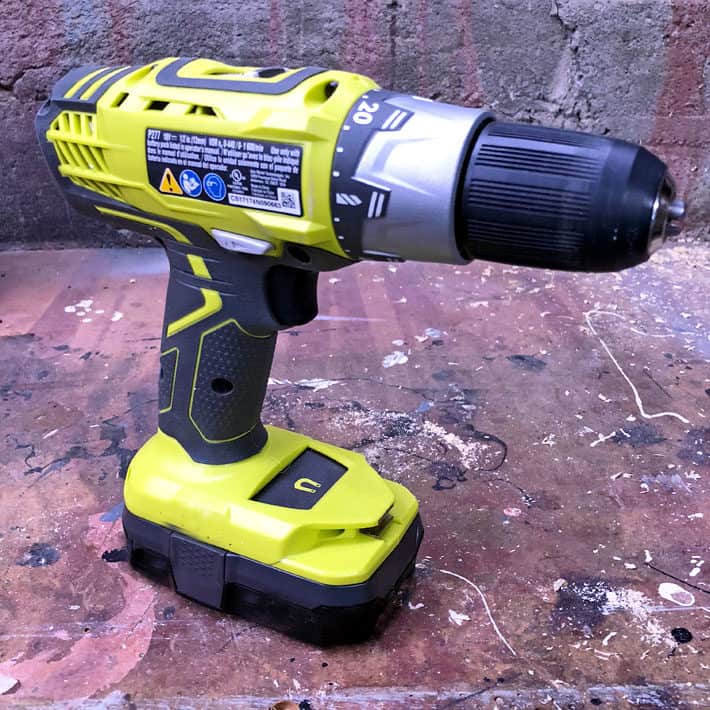
This post is NOT sponsored by Ryobi. They do not approve of or endorse this method for fixing a Ryobi battery. AT all.
Jump straight to the tutorial and how to video.
One of two things are going to happen as you read this post. You will either unfollow me due to my pathological boringness or ... you will propose marriage. So get ready to act accordingly.
If you have any sort of cordless power tool, but especially one powered by a Ryobi 18V battery, you have no doubt encountered the dreaded flashing red charger light.
And if you haven't ... you will.
It inevitably goes like this - you run to the basement to grab your cordless drill because after 10 years of thinking about it, you're finally going to build that 4 level, Tudor style treehouse with kitchenette.
Or you're going to hang a picture. (I can teach you how to hang a picture too)
Either way you put your battery in the charger and all you get is a flashing red light, which according to the label on the charger means your battery is defective. It isn't just dead. It's "defective".
I'm here to tell you it isn't. You probably left it in the charger too long which drains the battery.
Your battery is fine. It just needs a little boost.
This is where you want to go if you're looking for how to boost a car battery.
Table of Contents
You Can Fix a Rechargeable Battery That Won't Take a Charge.
You heard me right. You do NOT have to buy a new $50 battery. You do not have to call the company and swear at them because this stupid "defective" battery is only 2 weeks old. (although by all means feel free to do so) You do not have to wait until they ship you a replacement battery to finish your project. You can get that battery up and working in about 5 minutes.
NOTE: First try pulse charging.
Pulse charge your battery by plugging and unplugging your charger (with the battery in it) for 10 seconds. Try this a few times. If it doesn't correct the problem, continue on with this tutorial.
How to Fix an 18V Battery
What You Need
- A lithium ion battery that won't charge
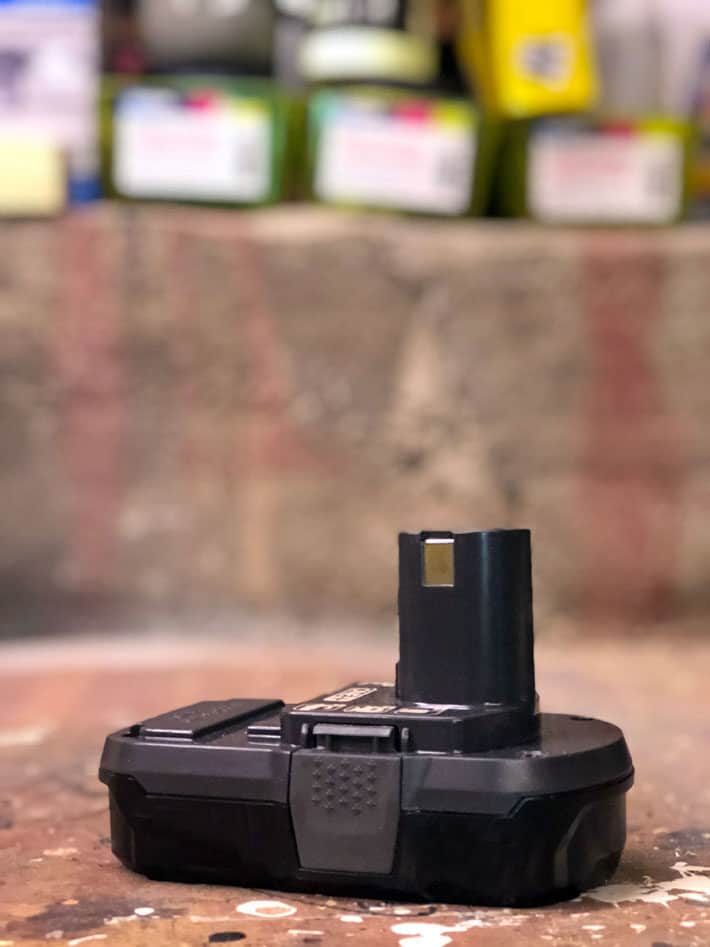
- An AC adapter (an old phone charger for example)
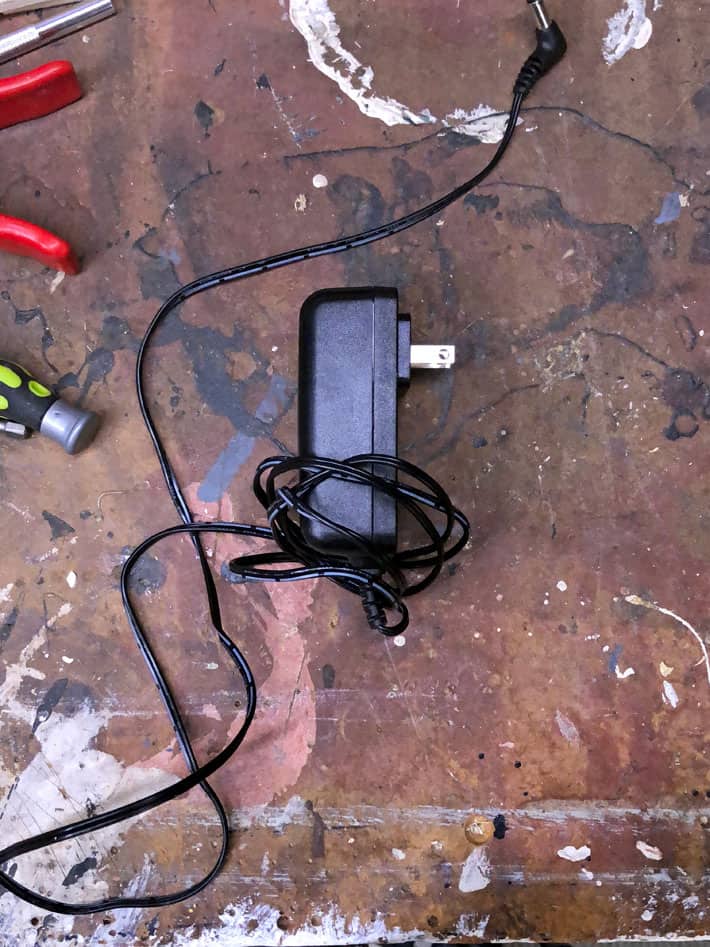
- A multimeter. (this is actually optional but helpful ... if you don't have one don't worry, you can still fix your battery)
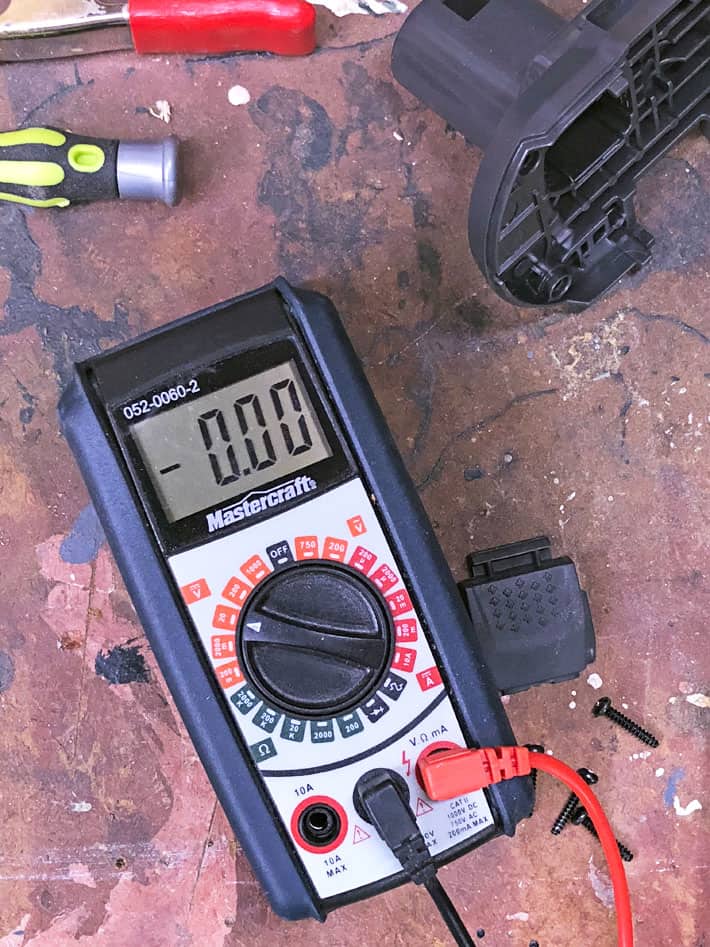
Note: If you aren't used to doing this sort of thing, or using things like a "multimeter" this is going to seem crazy hard and way out of your DIY league. It isn't.
Steps
Step 1. Cut the end off of your AC adapter. That's right. Just cut it off. It's for a 10 year old cell phone, you're never going to use it again anyway. It's frankly kind of weird that you saved it to begin with.
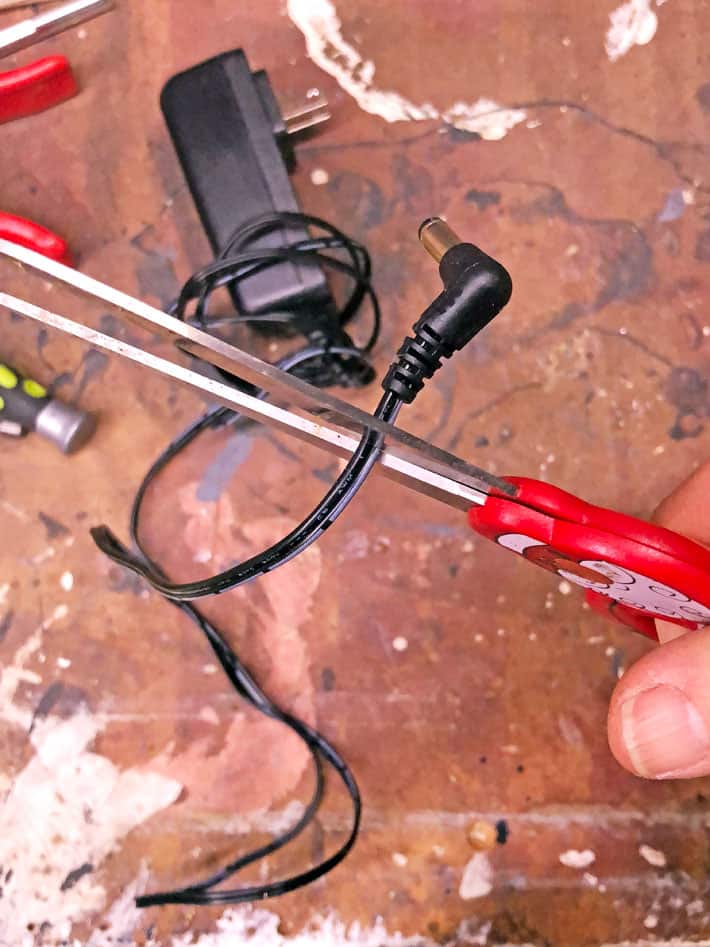
Step 2. Separate and strip off 1" of each wire. You have *just* made booster cables! Good for you.
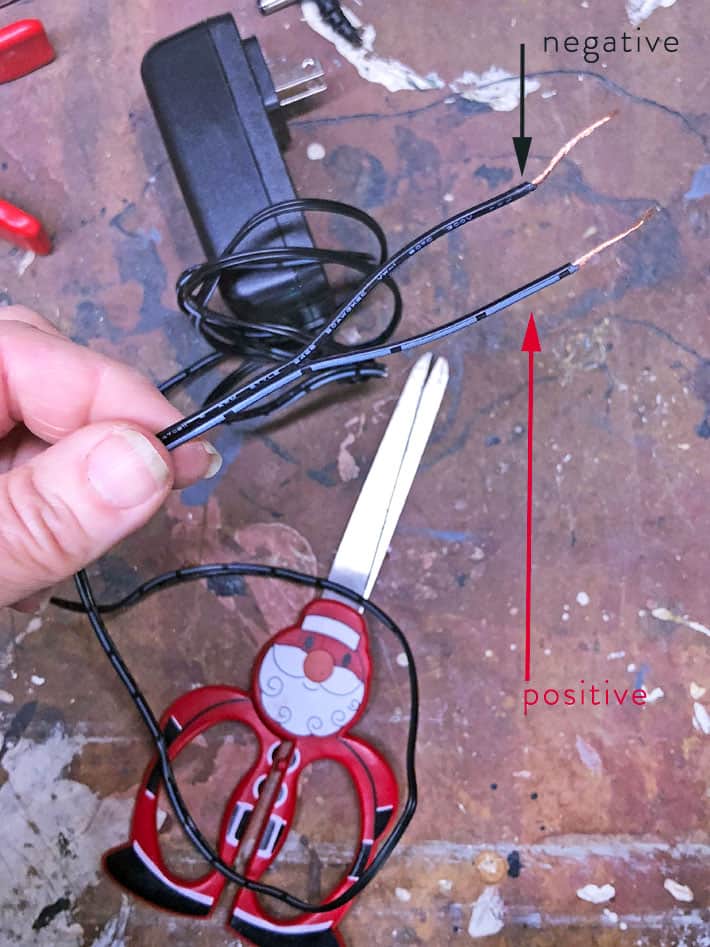
TIP:
Black wire = negative Striped or solid white wire = positive
IT IS VERY IMPORTANT TO NOT MIX THE TWO UP.
Step 3. Remove the screws holding the battery together.
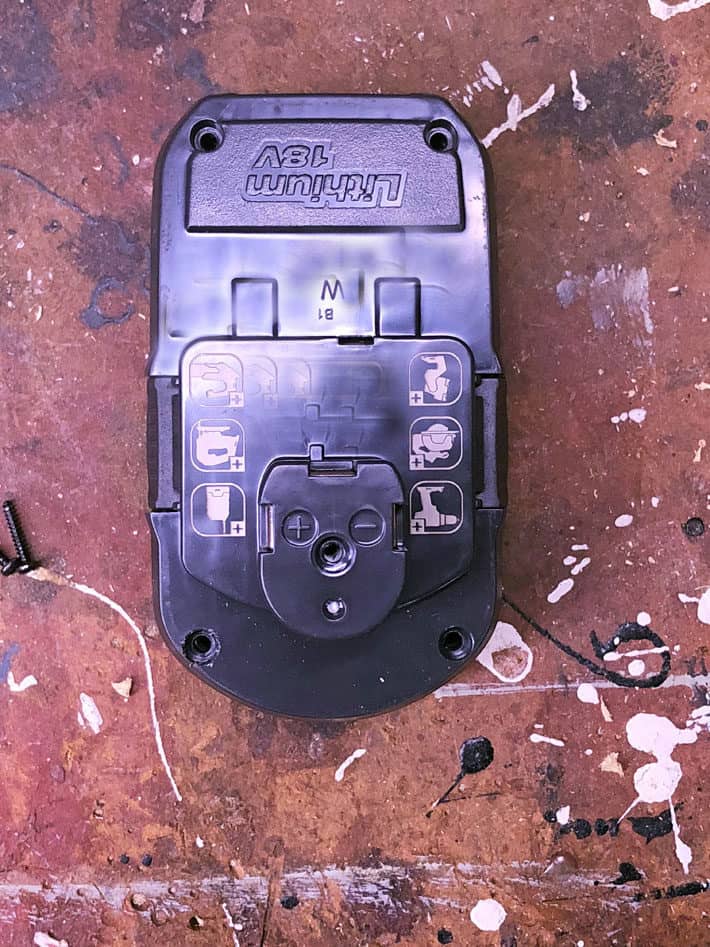
For Ryobi batteries it's a star shaped screw head like the one below.
A few years ago I bought a kit of small screwdriver heads from Amazon that has every small, weird, head you'd ever need.
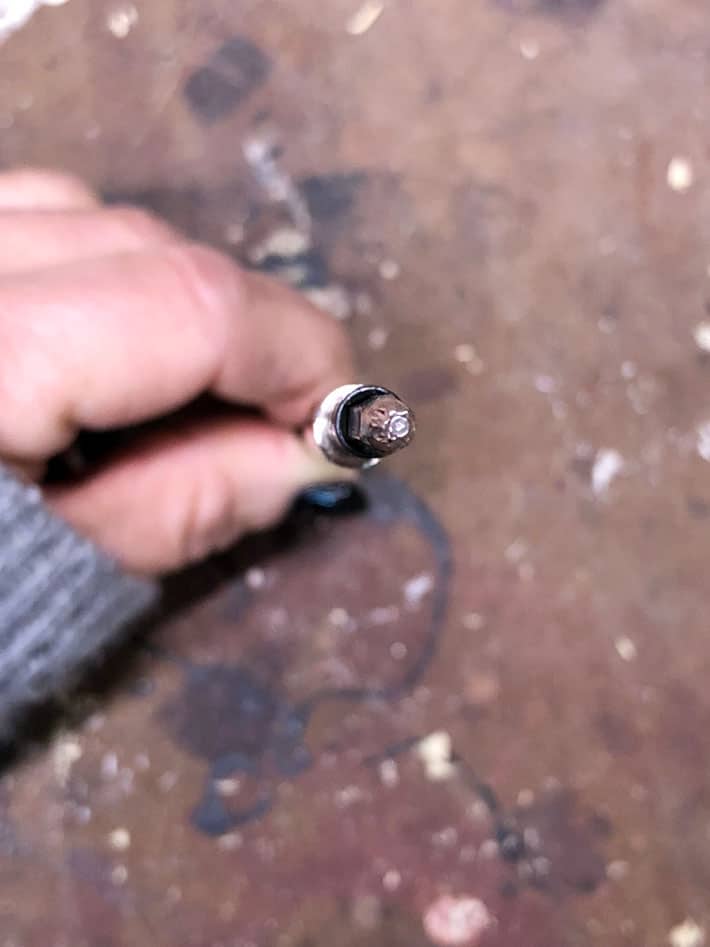
TIP:
There's a hidden screw under a piece of plastic. You need to pry the plastic off to get at the screw underneath. I used a very thin screwdriver to pry it off.
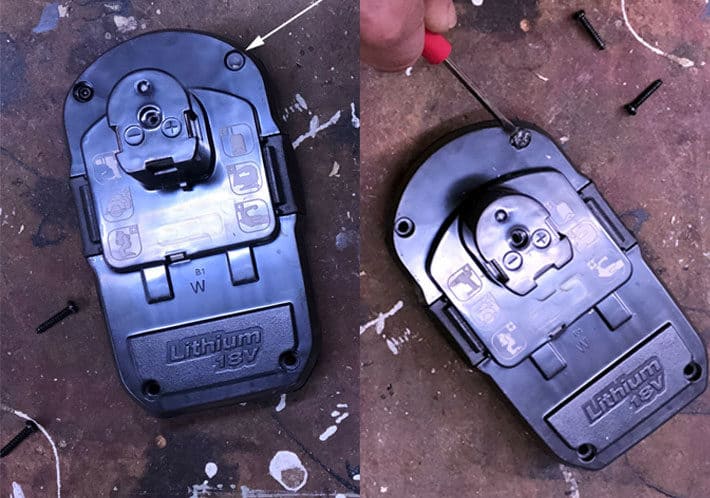
Step 4. Pull the top off of the battery case.
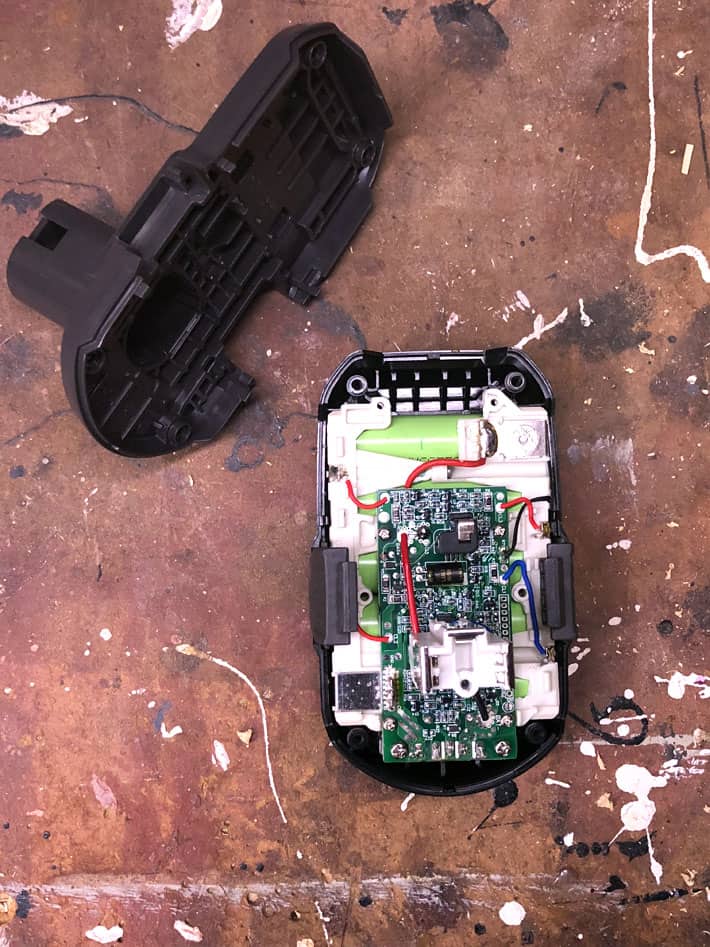
Step 5. Remove the 2 plastic side pieces. They're the things you press in to remove your battery from your drill.
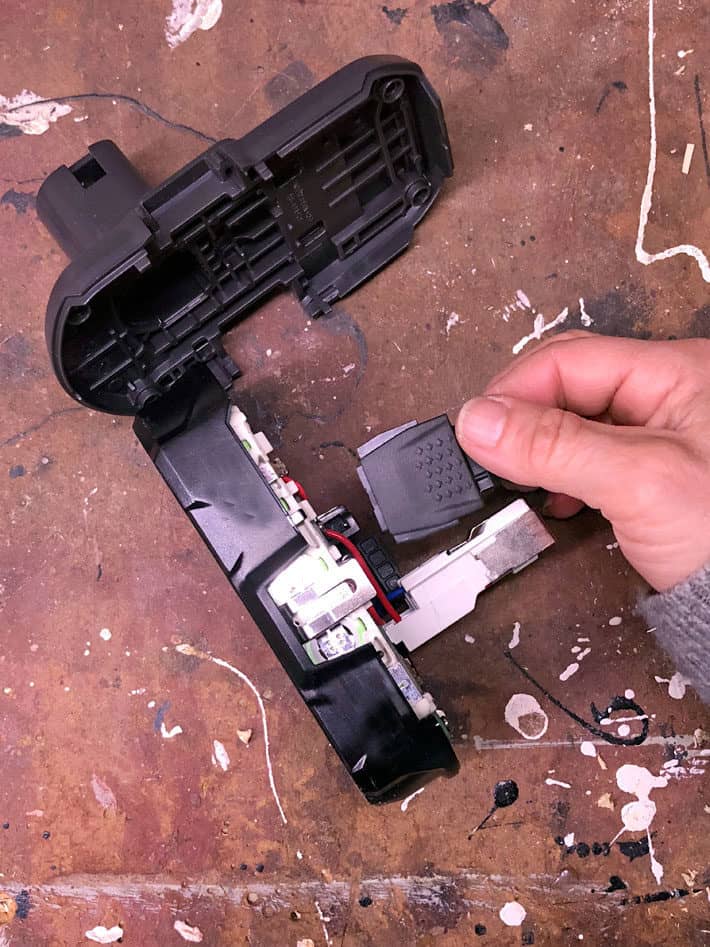
Step 6. Lift the battery pack out.
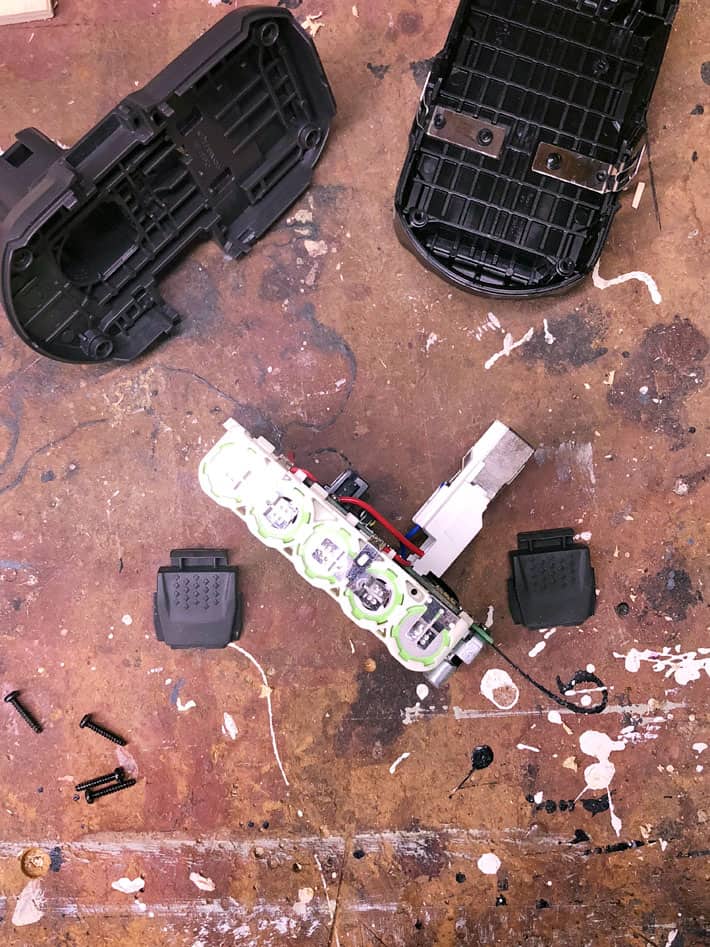
Step 7. Set the Multimeter to read volts. For testing an 18 volt battery choose the 20 volts setting. This will give you the most accurate reading. (If you don't have a multimeter skip to Step 9 and hope for the best)
TIP
Volts are symbolized by a "V" with one or two straight lines over it on a multimeter so it's that section of the multimeter that you use. The section under the V with the straight line(s). Not the squiggly line. The straight line.

Step 8. Touching the red probe to the positive (red) terminal and the black probe to the negative (black) terminal, read the voltage shown on the multimeter. In my case the battery was carrying a charge of 0.06 volts. Which is *almost* nothing, but not completely nothing.
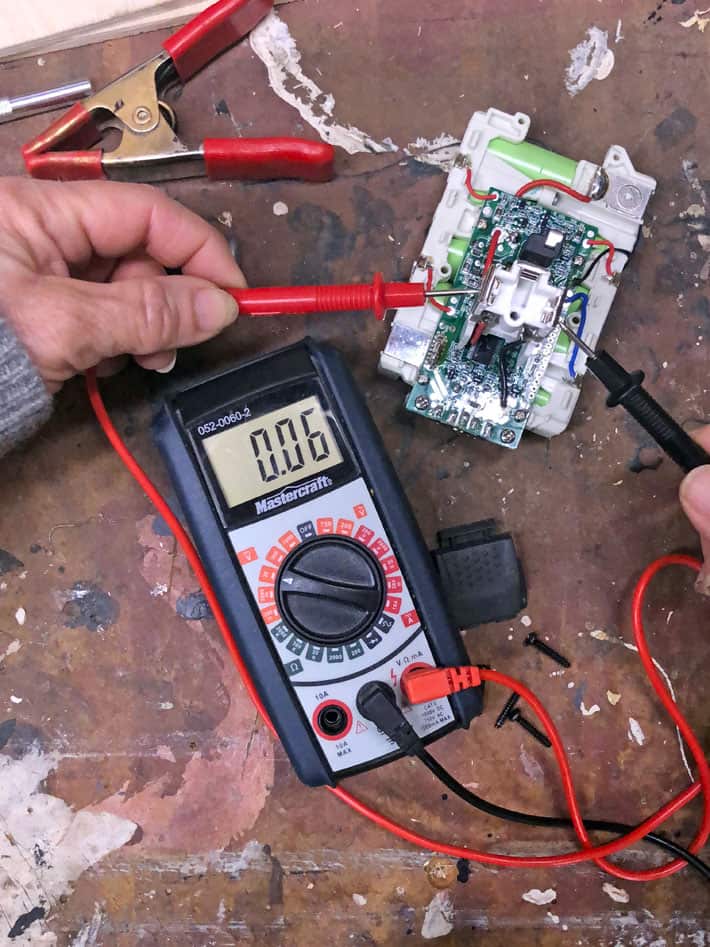
Step 9. Plug your AC adapter in and using the wires, boost your dead battery. Just touch the black wire to the negative terminal (the one with the black wire going to it) and the white wire (or striped wire) to the positive terminal (the one with the red wire going to it). Do this on and off for approximately a minute.
TIP
Apparently lithium ion batteries should be "pulse" charged. Which means you hold your wires down for 15 seconds or so, then release them. Then hold them down again. Over and over.
DOUBLE CHECK THAT YOU ARE TOUCHING POSITIVE TO POSITIVE AND NEGATIVE TO NEGATIVE.

Step 10. Test your the voltage on your battery pack again. It should be higher than it was before boosting. (Again, if you don't have a multimeter don't worry about this - you'll just have to press on without one)
Mine went from 0.06 volts to 7.58 volts after a minute long boosting session.
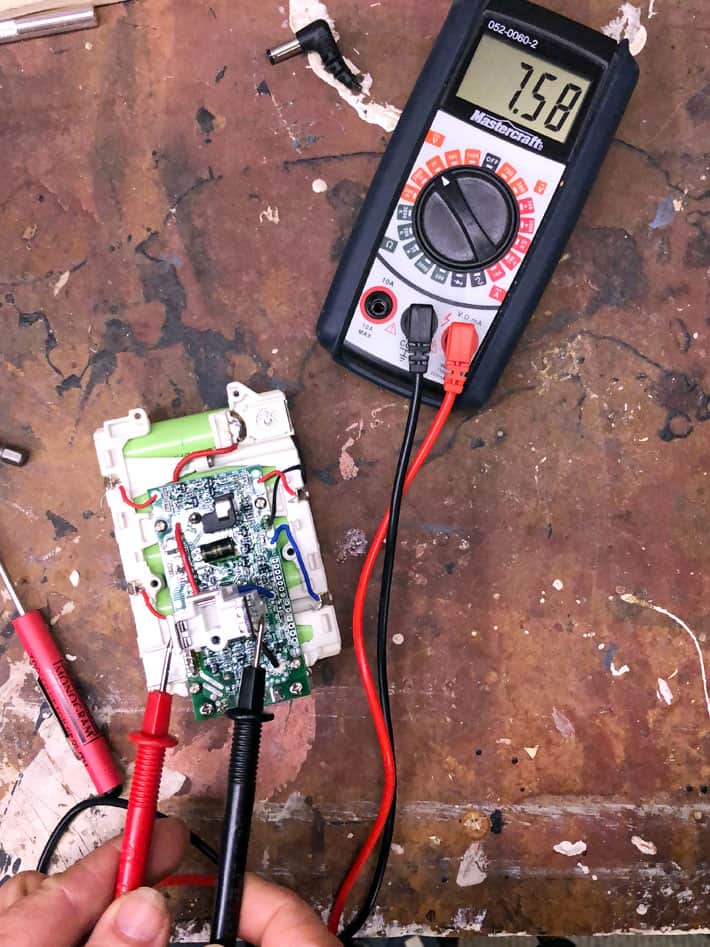
Step 11. Put the plastic cover back on the battery pack (just the part that goes into the charger) and set your battery on the charger to see if it will take a charge.
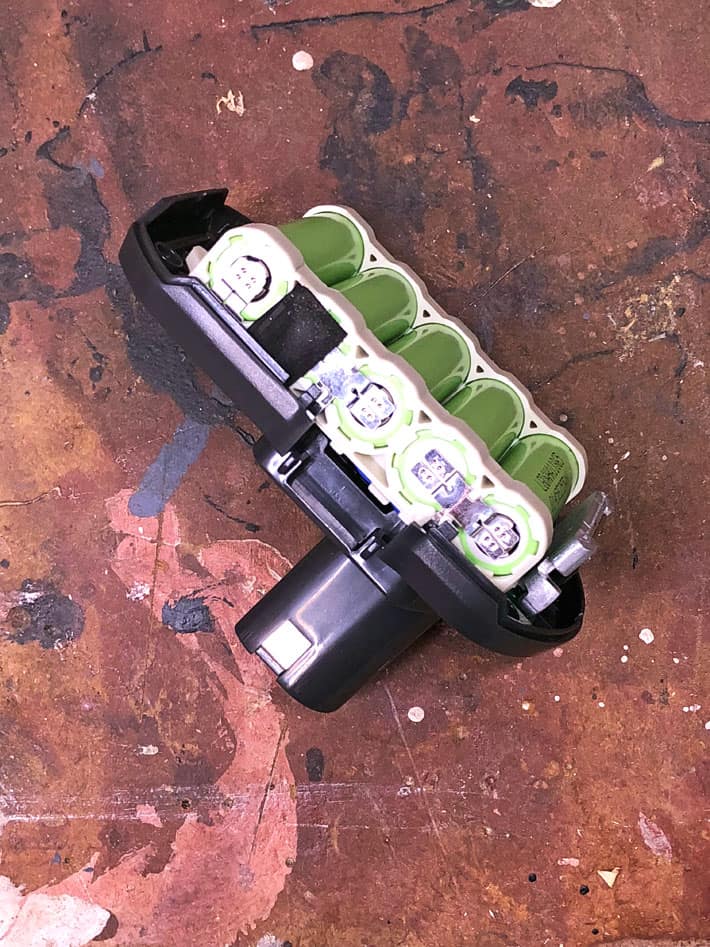
If you still only get a red flashing light and the battery won't charge, boost the battery some more. I find the battery charger will recognize that the battery is good again when you boost it to between 10 and 14 volts.
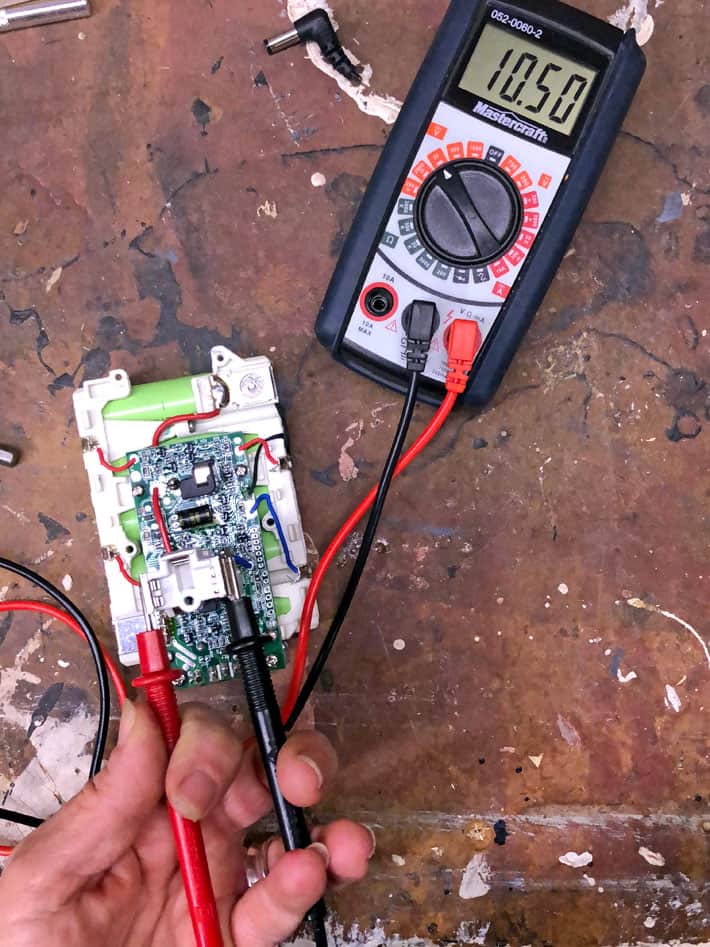
Just keep repeating the "pulse" boosting and testing the battery until it will finally be recognized by the charger and you get the green light.

To those of you who found this subject matter to be on par with spending 3 hours in a waiting room, sorry 'bout that.
For the rest of you? I know exactly how you feel. I felt the same way. Let me know exactly how elated you were after you brought your first battery back to life in the comments section.
Here's a 3 minute tutorial video showing me as I fix my own battery.
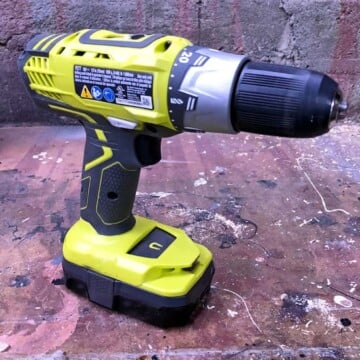
How to Fix a Ryobi 18v Rechargeable Battery
Instructions
- Cut the end off of your AC adapter. That's right. Just cut it off. It's for a 10 year old cell phone, you're never going to use it again anyway. It's frankly kind of weird that you saved it to begin with.
- Separate and strip off 1" of each wire. You have *just* made booster cables! Good for you.
- Remove the screws holding the battery together. There's a hidden screw under a piece of plastic. You need to pry the plastic off to get at the screw underneath. I used a very thin screwdriver to pry it off.
- Pull the top off of the battery case.
- Remove the 2 plastic side pieces. They're the things you press in to remove your battery from your drill.
- Lift the battery pack out.
- Set the Multimeter to read volts. For testing an 18 volt battery choose the 20 volts setting. This will give you the most accurate reading. (If you don't have a multimeter skip to Step 9 and hope for the best)
- Touching the red probe to the positive (red) terminal and the black probe to the negative (black) terminal, read the voltage shown on the multimeter. In my case the battery was carrying a charge of 0.06 volts. Which is *almost* nothing, but not completely nothing.
- Plug your AC adapter in and using the wires, boost your dead battery. Just touch the black wire to the negative terminal (the one with the black wire going to it) and the white wire (or striped wire) to the positive terminal (the one with the red wire going to it). Do this on and off for approximately a minute. DOUBLE CHECK THAT YOU ARE TOUCHING POSITIVE TO POSITIVE AND NEGATIVE TO NEGATIVE.
- Test your the voltage on your battery pack again. It should be higher than it was before boosting. IF IT IS NOT, THEN STOP. YOUR CELL COULD BE DAMAGED AND CONTINUING COULD BE DANGEROUS.
- Put the plastic cover back on the battery pack (just the part that goes into the charger) and set your battery on the charger to see if it will take a charge. If you still only get a red flashing light and the battery won't charge, boost the battery some more. I find the battery charger will recognize that the battery is good again when you boost it to between 10 and 14 volts.
- Repeat the "pulse" boosting and testing the battery until it will finally be recognized by the charger and you get the green light.
- Reassemble your battery. Your rechargeable battery is now fixed.
Video
Notes
- Black wire = negative Striped or solid white wire = positive It is very important to not mix the two up.
- There's a hidden screw under a piece of plastic. You need to pry the plastic off to get at the screw underneath. I used a very thin screwdriver to pry it off.
- Volts are symbolized by a "V" with one or two straight lines over it on a multimeter so it's that section of the multimeter that you use. The section under the V with the straight line(s). Not the squiggly line. The straight line.
- Lithium ion batteries need to be "pulse" charged. Which means you hold your wires down for 15 seconds or so, then release them. Then hold them down again. Over and over.
Please direct marriage proposals to my publicist. A certain tool company is *not* interested in proposing marriage to me. So I'd like to make a point of saying I love these tools and use them all the time. Their batteries and chargers on the other hand, could use some improvement.
OTHER WAYS TO FIX THINGS.
- How to Unclog Your Central Vacuum
- How to Sharpen a Push Mower
- How to Replace Carbon Brushes on Any Motor
- How to Mend a Broken Fingernail (because you're surely going to need it after replacing carbon brushes)
Questions & Answers
- Is there an easier way to do this? Possibly. Some people have had success with putting the battery in the charger and waiting for the red light to come on. Then you pulse charge the battery by quickly plugging and unplugging the charger.
- What voltage does the charger need to be? A 12 volt charger will do the trick.
- Isn't this dangerous? There is a small chance of BIG danger. So proceed with caution. If a cell doesn't immediately charge a little bit with this technique, stop. If anything (charger, cells, wires) starts to heat up, STOP.
- How long will the battery last after fixing them this way? Until you accidentally leave it in the charger too long again, or until the battery's natural death.
Seeing as you're the sort of person to make it all the way down here to the end of this post, you might like to learn how to install a battery operated electric fence around a home vegetable garden.

*Proceed with caution and follow instructions exactly. Failing to do so could lead to injury.*
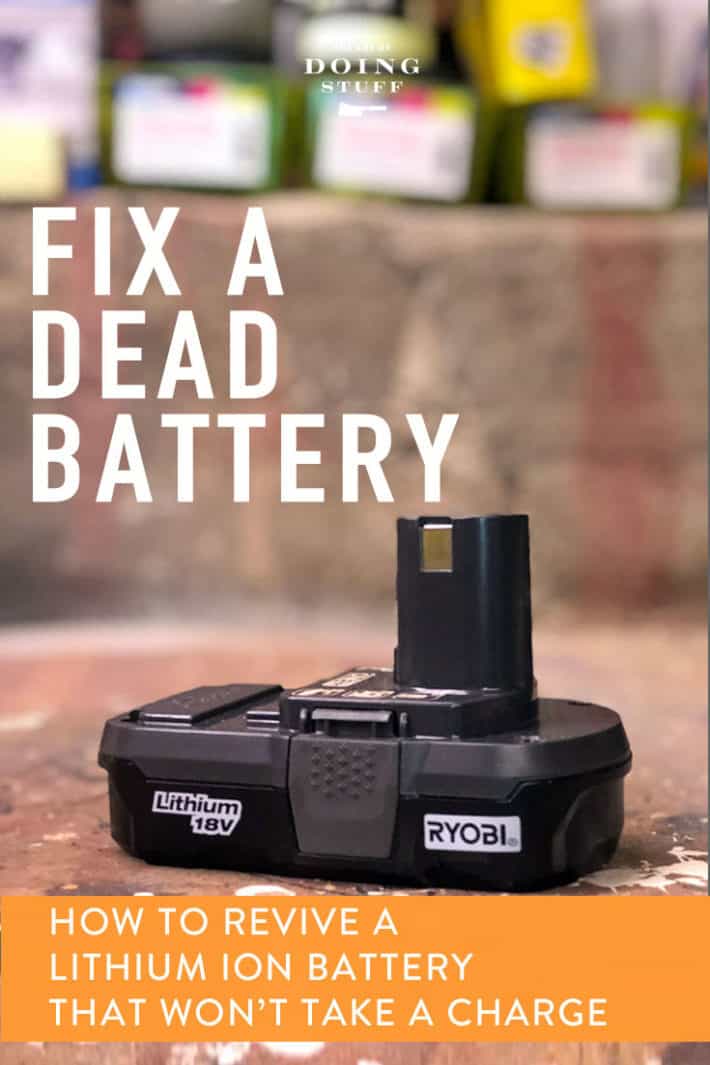





I have had success paralleling a charged battery with a "dead" battery for several seconds without removing the cover. Using a foot of speaker wire with both ends stripped. Positive to positive and negative to negative.
Brilliant. And so simple. The battery was dead on arrival from Ryobi so I was sent a replacement and told to dispose of the dead one. However, I used your technique and now have two functional batteries. Great stuff!
I fixed an over discharged battery (not Ryobi) using this basic technique simplified. I taped the wires to the terminals of the battery and used a 9 volt rectangular battery to provide the boost. The prongs of the plug sit nicely over the terminals of the 9 volt battery and a couple of on and offs and it fired up.
Unless you’re checking each battery inside the pack to check if they’re balance or too identify a bad cell, removing the housing of the battery is unnecessary as the + and - contact points are labeled on battery housing itself.
If you’ve got a new battery( ex. HP battery) and this still doesn’t work then, while battery pack is disassembled, press the button to display battery life and, before it turns off, jump the two terminals on the circuit board both labeled J1 with a small wire stripped at both ends. This will reset the BSM (battery safety module) and should trick the charger into thinking the battery is fine. Which it is actually was/is anyways.
est ce qu'il y a une methode pour les batt nycad deawall 18 v
ou la meme chose
is it a different technic for 18 v deawall nycad batt
or hte same method work also for nycad
Could you use a 12v automotive battery tender to replace the AC booster you made?
I used my car battery charger and it worked!
add 5 mega ohm resistors in parallel inline on the balance charge wire so it will never allow it below it's threshold of no return or as others know it as the Ryobi black hole of death also in the upside toward charger add a 5 uf capacitor on capacitor the longer wire is positive so be sure to put this in contact with the resistor you just added if needed add a wire to the capacitors ground side with a soldered connection then find anything ground in the batter pack or just usie the battery ground seal everything up with the 3.1 0r 4.1 with adhesive inside use a hair dryer and seal up shrink wrap and waaaalaaaa these 2 items are about 5 bucks on eBay
Will this work on Ni Cad batteries
Hi Jeff, I can only recommend this with a Ryobi battery like the one shown because that's the only one I've tested it for. ~ karen!
SHUT UP!!?!?!! I can not believe that I just fixed our lithium battery on our hedge trimmers! I have found so many useful things on your website over the years but this just really blows me away! I will think lovely thoughts about you every time I use the trimmers from now on. THANK YOU SO MUCH!!!
You're welcome!!!! Isn't it fun when things on the Internet are true? 🤣 Which method did you use? The take it apart or the plug and unplug? ~ karen!
I have this wonderful (not) battery for my Ryobi misting fan and when I try to charge the battery it just stays on the blinking green “evaluate” stage for hours, even days. Would this be a solution for that situation as well?
Thank you so much! I used this technique to try to save my Lithium battery for my Hoover vacuum and it worked! At first, I only had an adaptor with 7.5V (which did nothing) but once I got my hands on a 12V it worked like a charm!
Thanks for the rating and comment Liz. I'm gad it worked! ~ karen
i have three ryobi batteries thats holding only half the charge when i’m charging them. Even one of the battery is brand new and came together with the charger. i tried the boost, all those tricks that was said in the internet, but nothing to solve my problem. untiI decided to buy another charger. I bought a ryobi charger that can charge both lithium and nicad batteries. And place one battery at a time… Problem solved! all of them are fully charged.
Excellent! ~ karen
Would this process apply to Dewalt 18 V batteries
Wow really cool!!
Thank you Karen!!
Do you know what the limits of a lithium battery are? When do they explode? How does one know when they are too old to use? Do they start showing signs?
I admit to being petrified of this and have even declined using solar lights because their storage battery is lithium ion.
Thanks 🙏
Is there a way to do that with a 12v battery? I tried opening mine up hoping it looked similar to the 18v. It didn’t 🙁
Hi Sandara. This demonstration is for this exact battery only. ~ karen!
What sort of 12v battery? If it's lead acid you're probably out of luck if it's failed. If it's lithium then it's the same principle as above but I find it's better to measure the individual cells first to make sure they're all equal. What the post above doesn't clarify is that they're battery was never 0.06v. The circuitry cut the battery off. Had they measured each feel individually, they wouldve been around 1.5v each. Lithium charging circuitry will cut a pack off once the cells drop below 2v each (10v for 5 cell pack - also what it doesn't tell you is that these cells can be damaged easily below 2v each especially if they're below 2v for a few weeks. Lithium cells can cause serious fires if mishandled but that doesn't mean to say the above can't be done successfully - but there's probably more thorough guides to follow...
Will this work for black and decker or dewalt batteries also?
I posted this blog entry to one of my Facebook groups and not a few guys asked if you were married!
Sadly had this happen with a Dewalt 18v drill. Came with 2 batteries and one suddenly wouldn't charge. Still using the other. Dead battery was recycled so too late for that one but not for the 2 expensive replacements I bought.
Good luck when the time comes! ~ karen
I NEED your publicists contact info. I'm positive my husband will be happy to divorce me to marry you! You are AMAZING!!! As a contractor, he is constantly throwing out batteries that will not charge anymore. It gets expensive, needless to say...
Well before he buys the engagement dressage horse (my preference), the batteries do need to be relatively new. Old batteries that have simply used up their life should be chucked out. But if they're obviously not old enough for that to happen, then this will work. And I have no preference for horse colour but I do have a fondness for any of the German warmbloods. ~ karen!
Wow. I've never seen your men fans jump in to any article to comment like what was done on this one. Mansplaining to the 1,000th degree. None of the tutorials from the YEARS I've been following Karen have blown me up or caused a fire. A little respect for the intellect gents.
I wouldn't be too dismissive of any advice regarding lithium safety. I've boosted batteries with success in the past but I wouldn't do it with high current devices such as ebikes and power tools. I've seen a lithium battery go into thermal runaway and it's pretty dangerous. If it occurs inside a house it could be deadly, but 9/10 it'll probably be ok - it's the 1/10 that's the problem - and it probably won't be while charging, it'll be while in use when the current draw is at its highest.
My wife is a large loss home adjuster, and deals with home fires all of the time. A fire investigator she uses does not allow any high voltage battery charging in the house. No e-bikes, power tools etc. She had a loss where Ryobi batteries ignited and burnt the garage and part of the house. Immediately came home to tell me.
I still charge my Ryobis, and will be doing this, but it's in the back of my head about that.